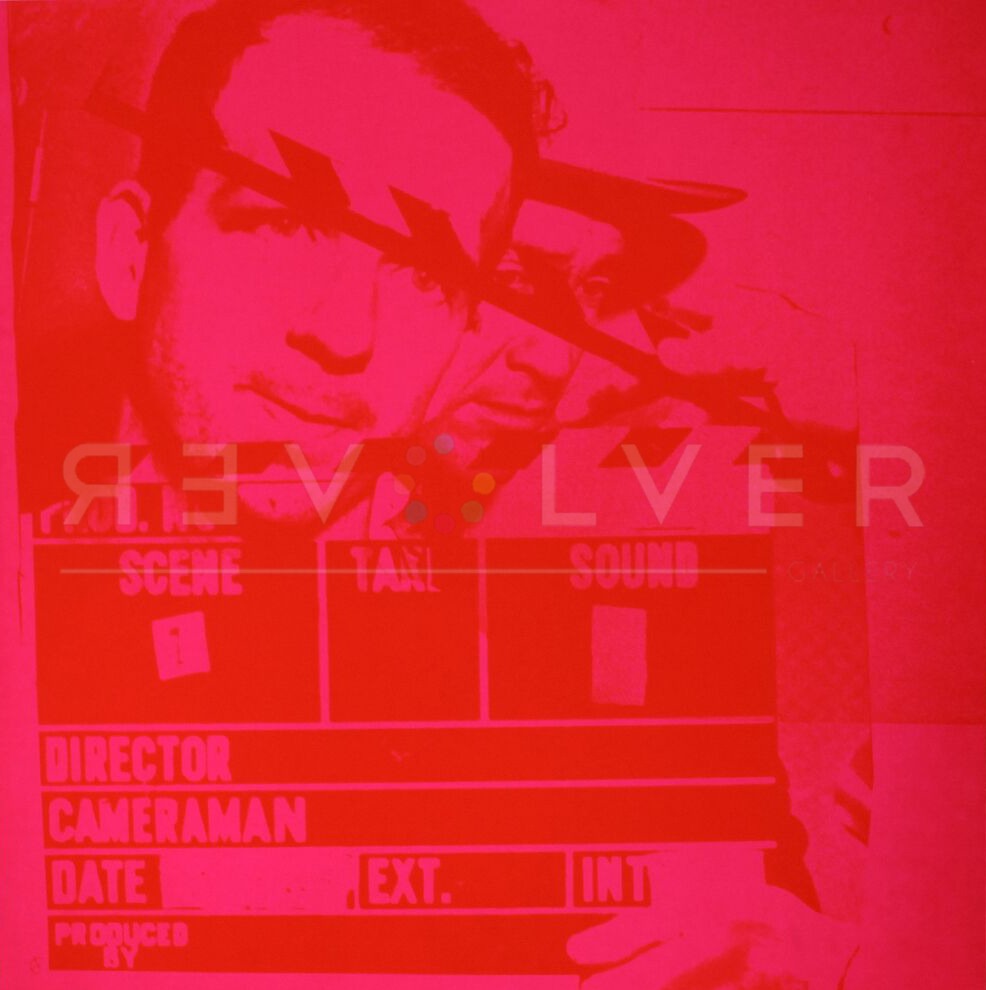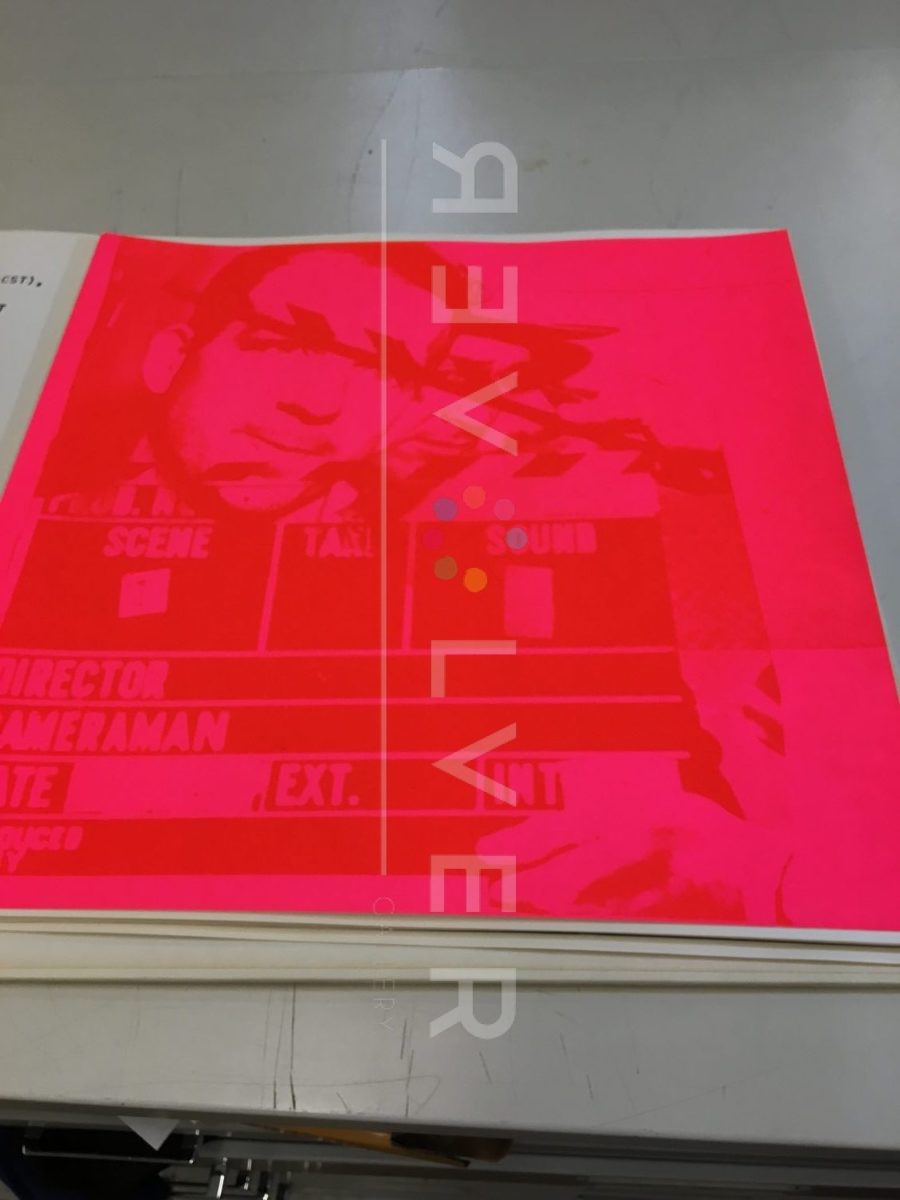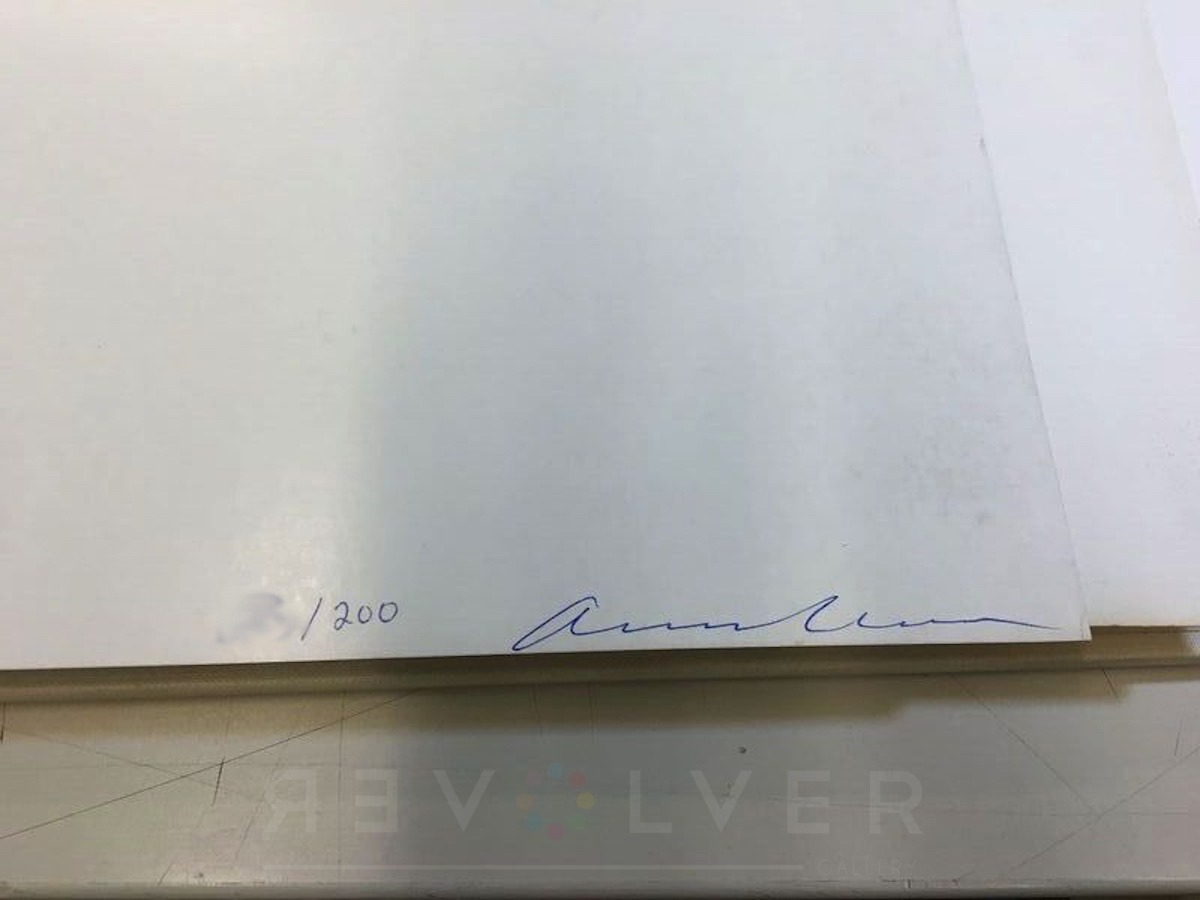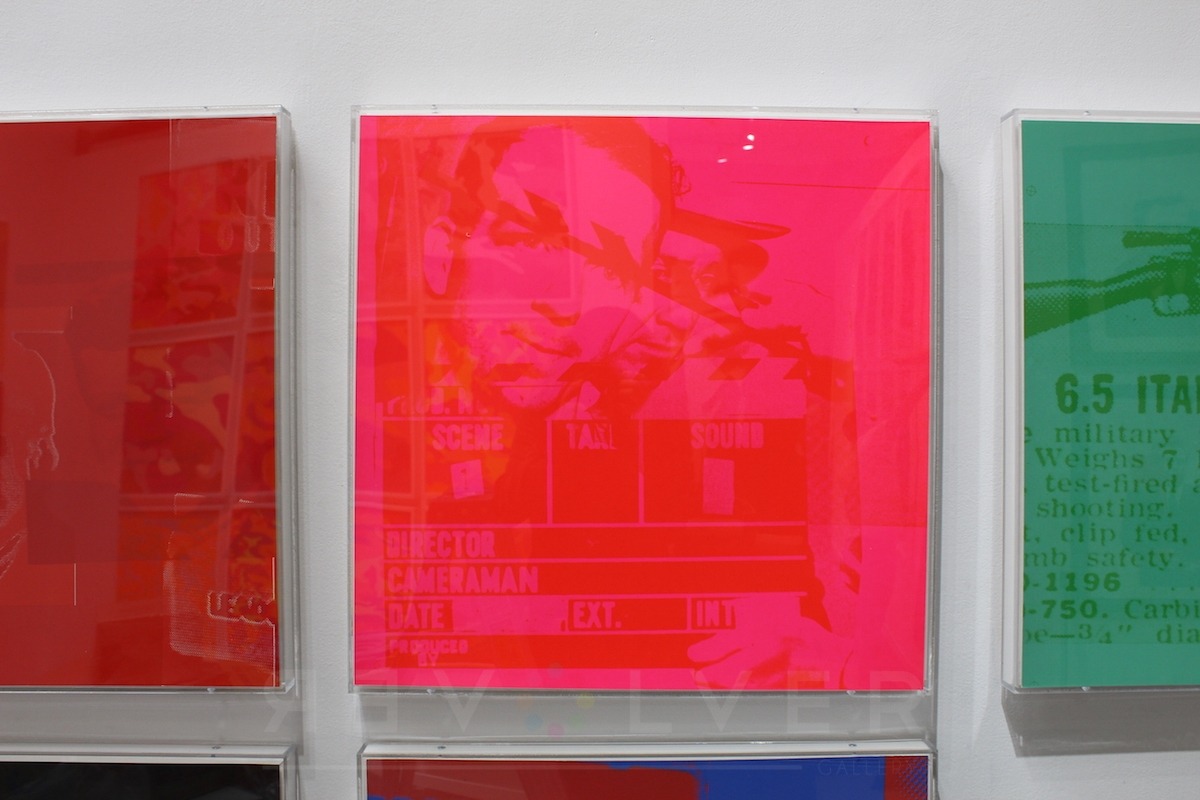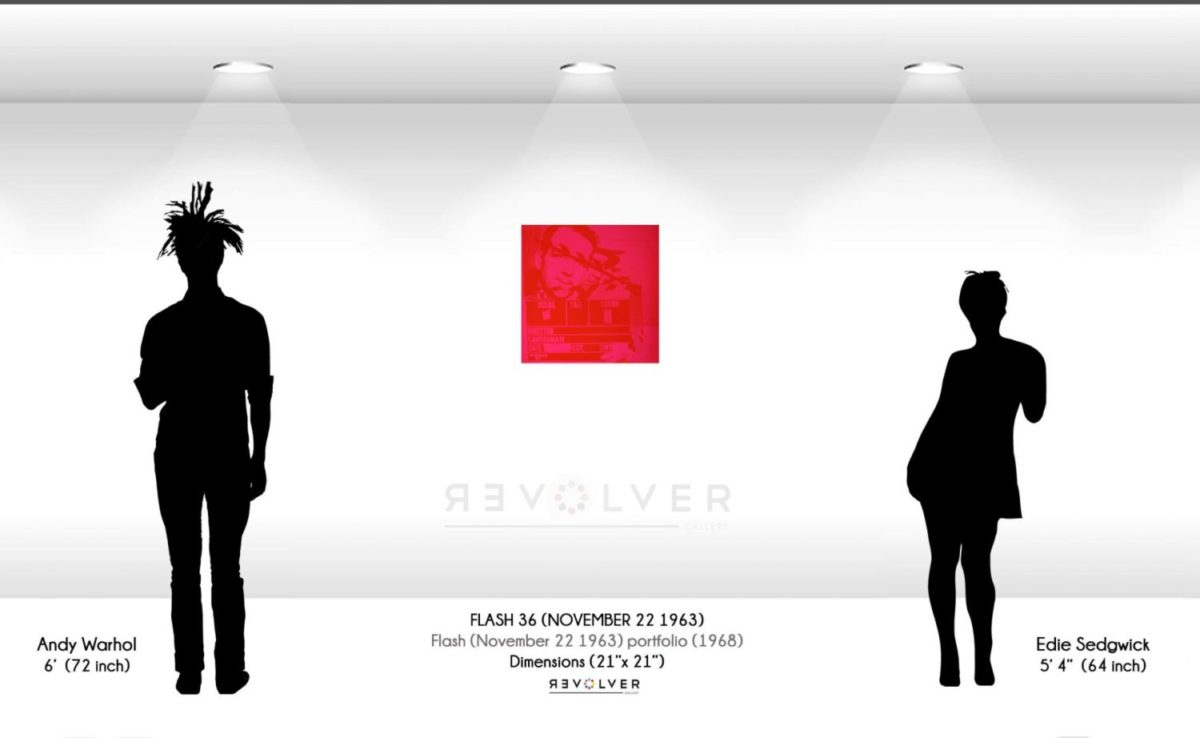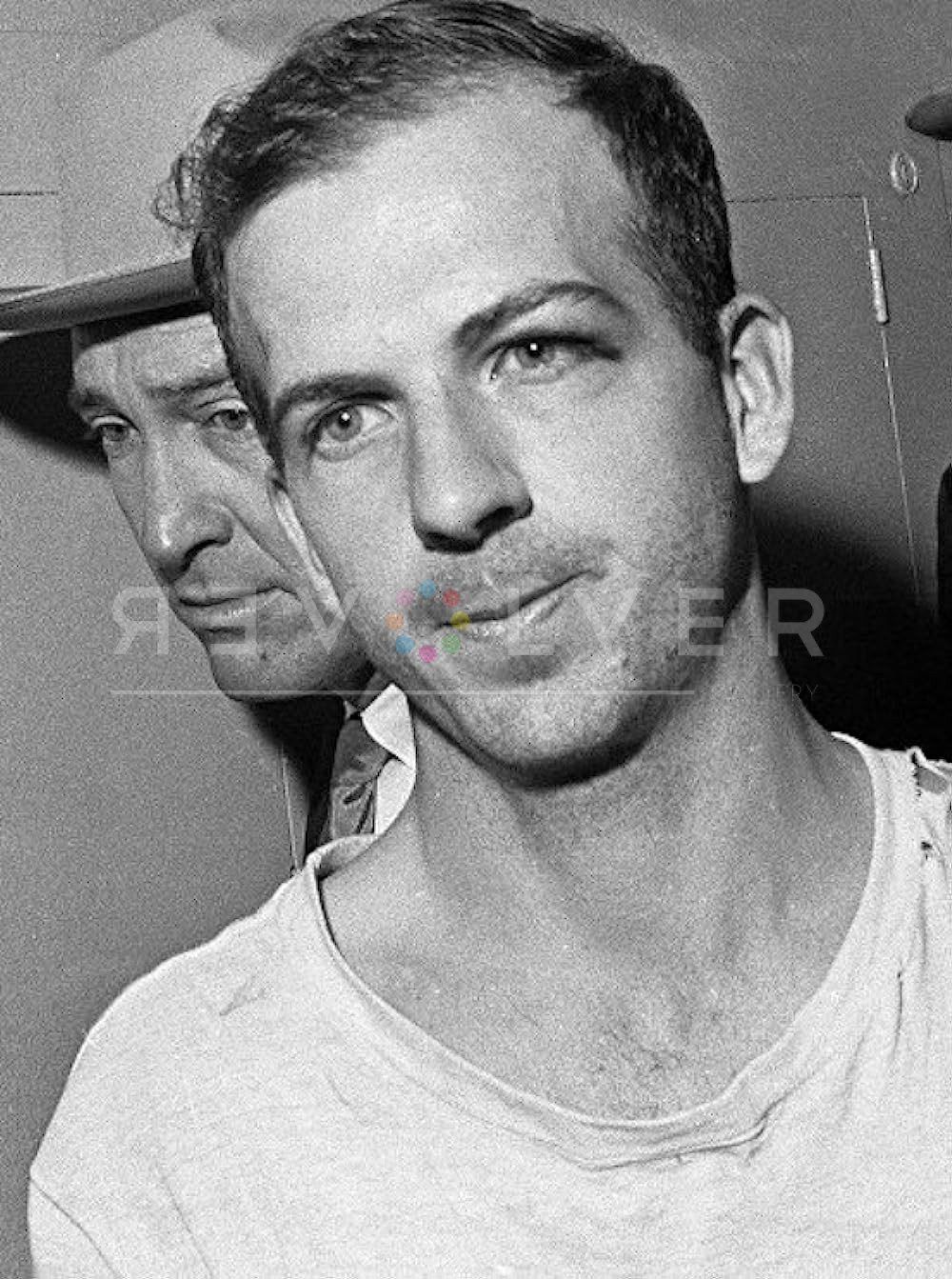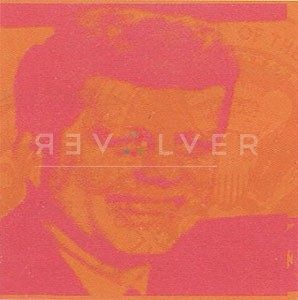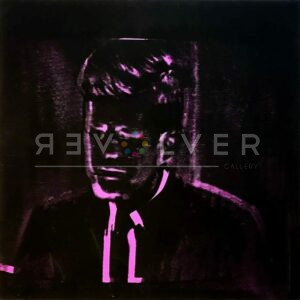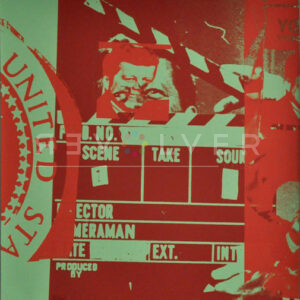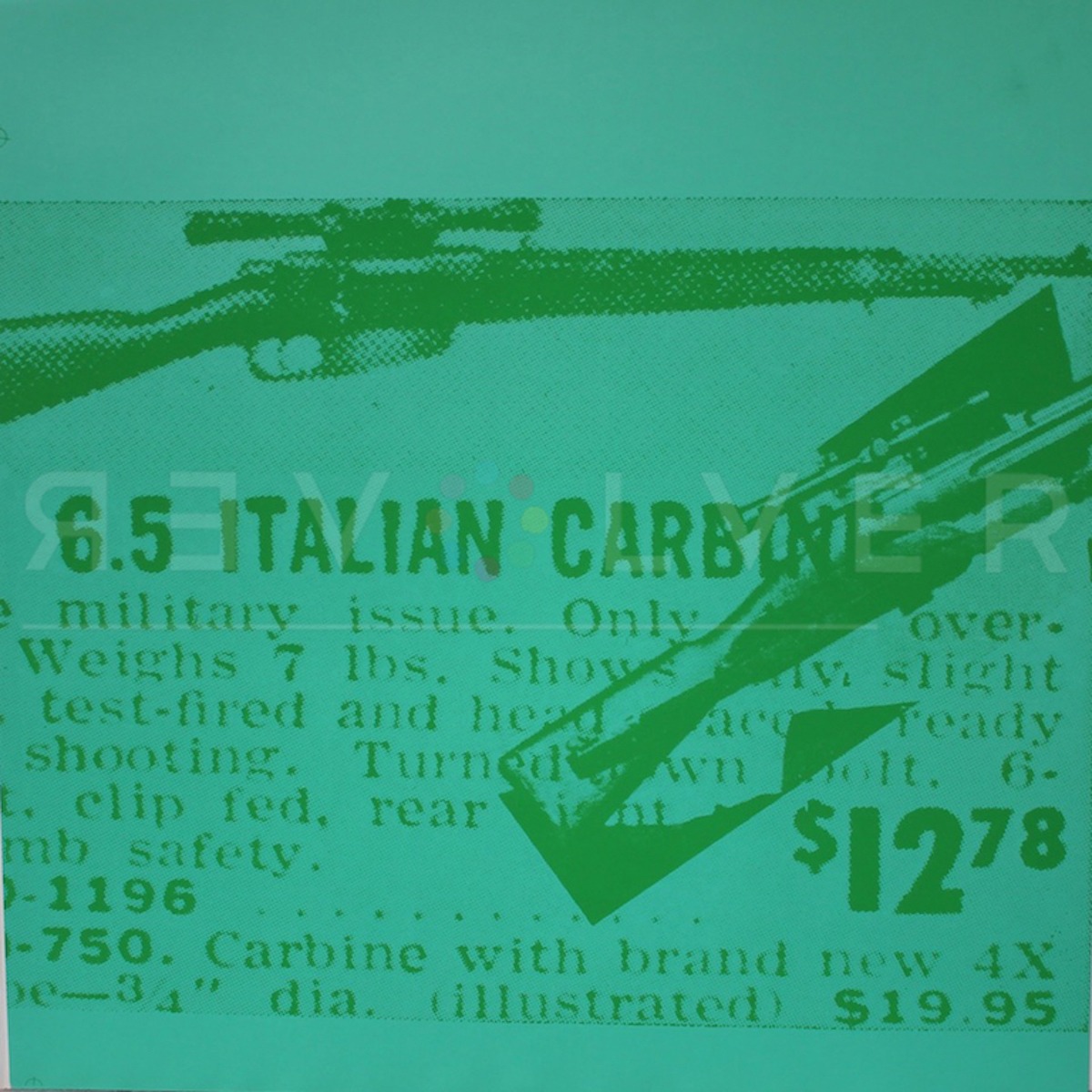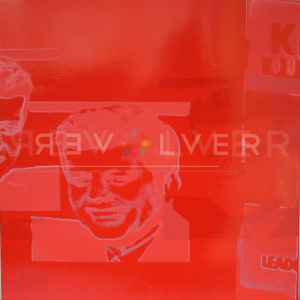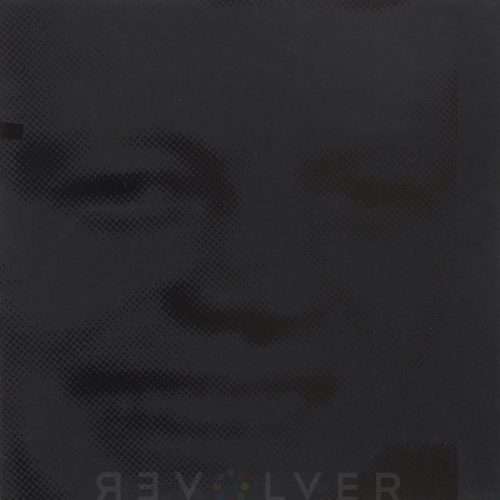Flash 36 by Andy Warhol is a screenprint from Warhol’s Flash series. It is one of eleven foreboding prints in the portfolio. The Flash collection focuses on the media coverage following President John F Kennedy’s assassination on November 22nd, 1963. For weeks after the tragic incident, news outlets erupted with constant reports and imagery related to the event. Fascinated by mass media, Warhol absorbed the chaotic cycle, reflecting upon his society’s relationship with violence. Five years later, he published the Flash portfolio in 1968.
Flash 36 derives its name from the term “news flash,” as a flurry of media coverage swept the entire nation for weeks after the assassination. Each print is made from campaign posters, text from newspapers, and mass-media photographs surrounding the incident. Warhol ponders how the media often distorts our image of reality and controls the way the public consumes information. The series expresses Warhol’s frustration and sadness with the overwhelming presence of violence in the media. “I’d been thrilled about having Kennedy as president,” Warhol said. “He was handsome, young, smart, but it didn’t bother me that much that he was dead. What bothered me was the way television and radio were programming everybody to feel so sad. It seemed like no matter how hard you tried, you couldn’t get away from the thing.”
Warhol was equally as fascinated by violence and disaster as he was with celebrities. This is evident through works like Flash, as well as his Death and Disaster pieces, such as the acclaimed Race Riot. Warhol’s interest in death stemmed from his contempt for the subject, rather than the pure fascination he held for glamour and celebrity life. He used the catastrophic event of JFK’s death as an opportunity to illustrate his disapproval with the media’s obsession. He also developed artwork focused on Jackie Kennedy, and the impact the event had on her. In Nine Jackies, Warhol displays the widowed first lady before and after her husband’s assassination.
Warhol presented each Flash print with an accompanying teletype text taken from news sources. The text is another hint at how the media constructs our understanding of events. Warhol seems to have had a different reaction than most towards the event. He recalls exactly what he was doing at the time of the assassination. “When President Kennedy was shot that Fall, I heard the news over the radio while I was alone painting in my studio,” he reveals. “I don’t think I missed a stroke. I wanted to know what was going on out there, but that was the extent of my reaction” (POPism: The Warhol Sixties, 1980).
In Flash 36, Warhol uses a blinding bright red, possibly to evoke feelings of hostility and violence. He incorporates an over-exposed effect in this print where you can barely see the true image. Thus, Warhol reflects the media’s over-exposure of tragedy and violence. Further, this hue clouds the true image in Flash 36, representing the media’s ability to produce ideas and images that are separate from reality. Flash 36 is one of Warhol’s most ingenious images, from one of his most unique and compelling series.
Photo credit: Lee Harvey Oswald in custody in Dallas. Unidentified Photographer.

